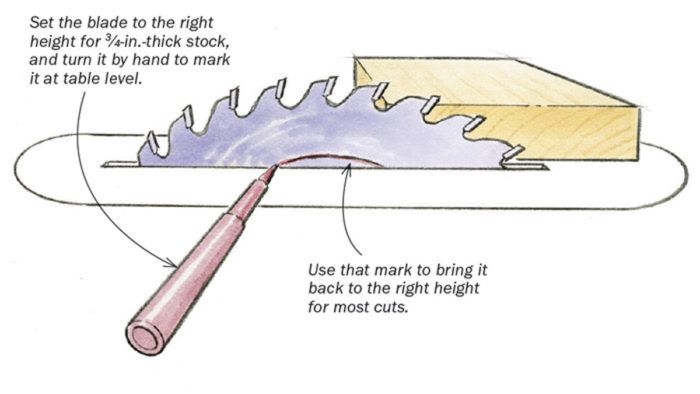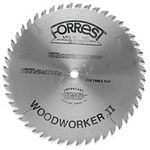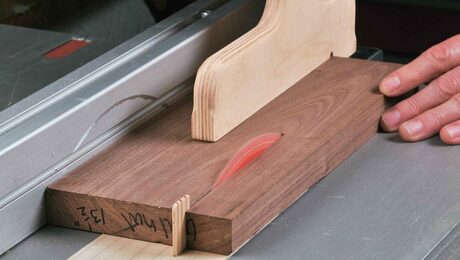Mark a table saw blade for its most common height

I use my tablesaw most often to cut 3⁄4-in.-thick stock. To set the blade to the proper height without measuring, I mark both sides of the blade with a Sharpie at table height. Just raise the blade to the optimum height for your average workpiece (the best balance between safety and efficient cutting is to have the bottom of the gullets just above the top of the stock), place the marker on the throat plate, and spin the blade by hand. The mark will work just as well when you are using a crosscut sled.
—David Gleason, Houston, Pa.
Drawing: Dan Thornton
Issue #263 Sep/Oct 2017
Note: Reader Suburbanguy points out in the comments below that the marker shown should be right above the arbor.
Fine Woodworking Recommended Products

DeWalt 735X Planer

Hedgehog featherboards

Forrest Woodworker II Blade





















Comments
I think that part of what is missing in the explanation is that the sharpie should be right above the arbor. The sharpie is shown out toward the circumference and of course the circle that is drawn simply approaches that of the bottom of the gullet. One should also allow for the radius of the sharpie (3/4 + rad) in this setup and then just raise the blade until the circle shows.
Good catch.
Such a great idea to use the saw plate. I'd imagine it doesn't contact the work so the marks last a while. Easily expand this to using, say, two colors at different diameters to account for stock with and without a sled base thickness.
I noticed the above-the-arbor thing right away. But this does make me wonder: could saw blade manufacturers engrave thin grooves or cut small markers into the metal, at regular intervals from the tooth tips? Or would this weaken the blade and make them dangerous?
Uh, I don't get it. Seems it's at least as easy to just raise the blade until one can see the bottom of the gullets clear the top of the wood.
Log in or create an account to post a comment.
Sign up Log in